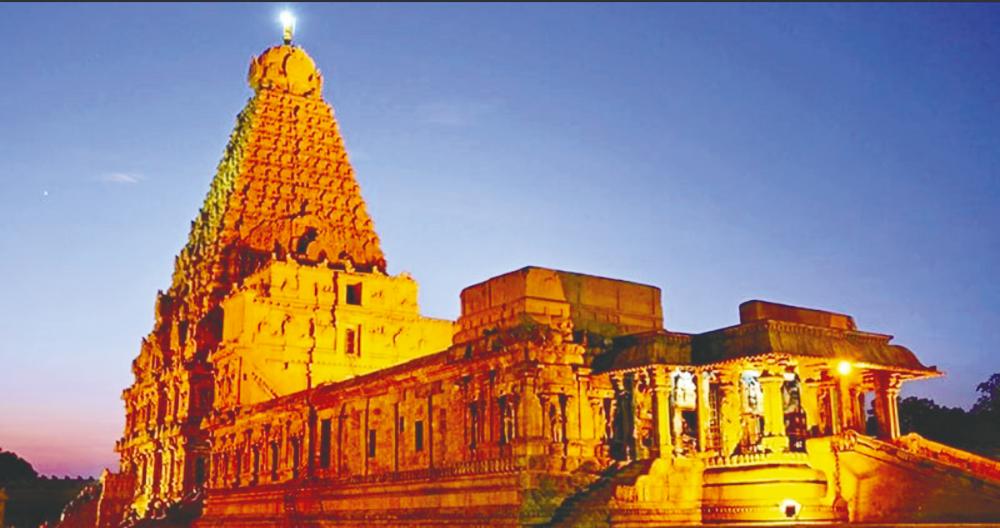India is well-known for its ancient and historical monuments built by past emperors and kings during their rule, dedicated to gods and goddesses which are worshipped even to this day.
The outstanding temples showcase the marvelous architecture, precision and calculation involved in the construction of these perfect structures, using only rocks and wood found in the surroundings.
Built on significant religious sites, the temples were erected at strategic locations such as riverbanks, mountains, beside lakes or even on an island. It is hard to imagine the challenges the architects faced in the creation of these magnificent temples centuries ago.
Some of the medieval buildings have even set the theme for many modern structures and remain an architectural inspiration, with its attractive art, paintings, murals, frescoes and crafts such as stone and wood carvings that hints of an interesting story behind the building of these temples.
Brihadeeswara Temple
Touted as one of the most beautiful temples ever built, Breehadiswara temple of Thanjai Periya Kovil, or Peruvudaiyar Kovil, located at Thanjavur in Tamil Nadu showcases brilliant architecture and paintings, bronze castings and sculptures.
A Unesco World Heritage site known as the “Great Living Chola Temples” (which includes Gangaikonda Cholapuram and Airavatesvara temple), it has exquisite hand-carved designs on pillars and the “vimana”, the spectacular 216 feet towers carved from a single boulder.
An example of Tamil architecture that was adopted by one of the most prominent Indian kings, Raja Raja Chola I of the famous Chola Empire, whose powers spread all the way to South East Asia. He wanted to build a magnificent temple at Thanjavur, the capital of his Chola empire.
Located near the Cauvery River, the temple was completed in the 11th century (1002 to 1010 CE) and dedicated to Lord Shiva.
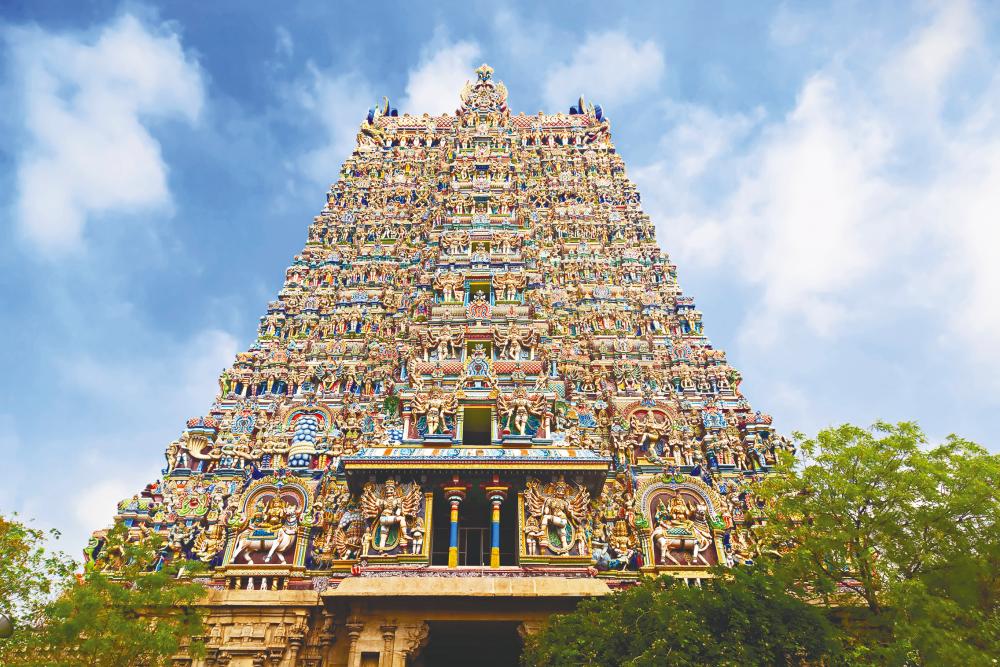
Meenakshi Amman Temple in Madurai
Dedicated to Goddess Meenakshi Amman, the grand temple was built by an emperor from the Pandyan Dynasty, Sadayavarman Kulasekaran I (1190 CE to 1205 CE).
The temple was the centre of the Madurai city, Tamil Nadu, and was rebuilt and extended over the years.
Situated on the southern bank of River Vaigai, the huge temple complex comprises 12 vibrantly colourful Gopuram (tall towers with carvings), with four larger ones facing North, South, East and West, and halls with captivating colourful drawings on the walls and over 30,000 sculptures.
The Aayiram Kaal Mandapam, or Hall of a Thousand Pillars, is the “wonder of the palace” due to its majestic Dravidian style architecture. Each pillar has carved sculptures and align in a perfect row whichever way they are viewed.
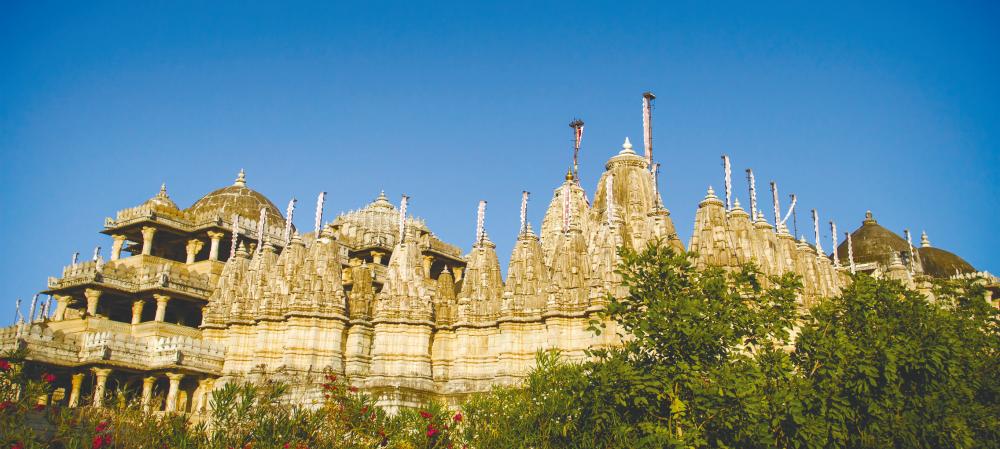
Ranakpur Jain temple
Built in the 15th century, the temple is located in the village of Ranakpur near Sadri town in the Pali district of Rajasthan. Spread over 48,000 square feet, the temple is one of five important pilgrimage temples for Jains.
It features 1,400 carved pillars that have intricate designs, with each pillar having distinct patterns that differ from the others. The temple is dedicated to Lord Adinath, the first “Tirthankara” of Jains, with a complex that has 24 halls, 80 domes made of light-colored marble, giving it a celestial appearance.
It was built by a Jain businessman, Seth Darna Sah, after he had a dream of a celestial vessel. He sought the help of Rana Kumbha, a ruler of the Mewar Kingdom, who gave him a piece of land for the temple and to build a town, which was later named Ranakpur. An architect named Deepak from Mundara was responsible for the design.
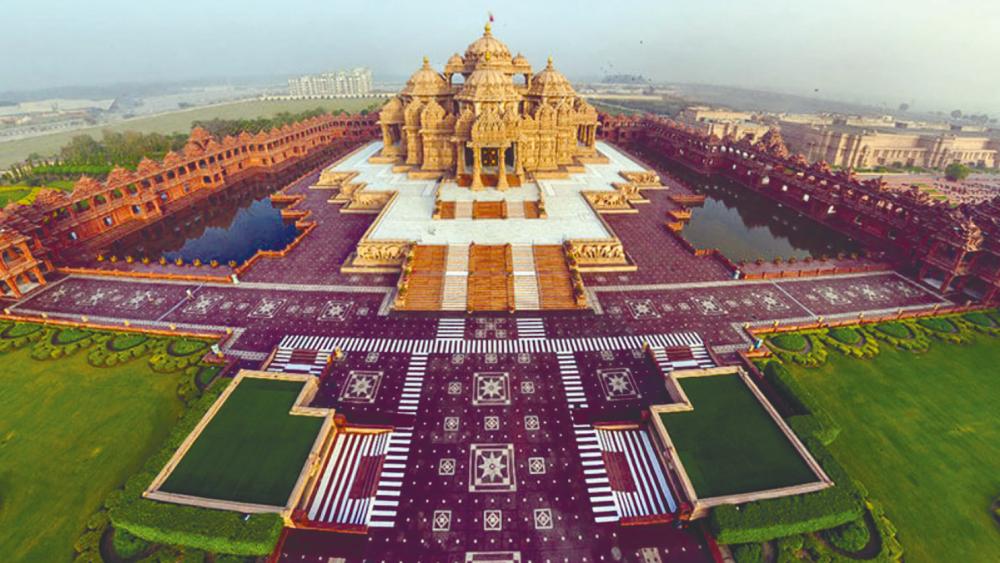
Akshardham Temple
An architectural marvel, the temple made it to the Guinness Book of World Records as the largest Hindu temple complex, covering 86,342 square feet and made of pink Rajasthani sandstone and Italian Carrara marble. The temple was built without any structural steel.
Located in New Delhi, the temple is dedicated to Bhagwan Swaminarayan and is surrounded by a lake, an expansive lawn called the Garden of India, or Bharat Upavan, with bronze sculptures of historical figures. “Akshardham” means the “divine abode of God”. The main area is the Akshardham Mandir, which rises to 141.3 feet, with a width of 316 feet and has more than 234 carved pillars.
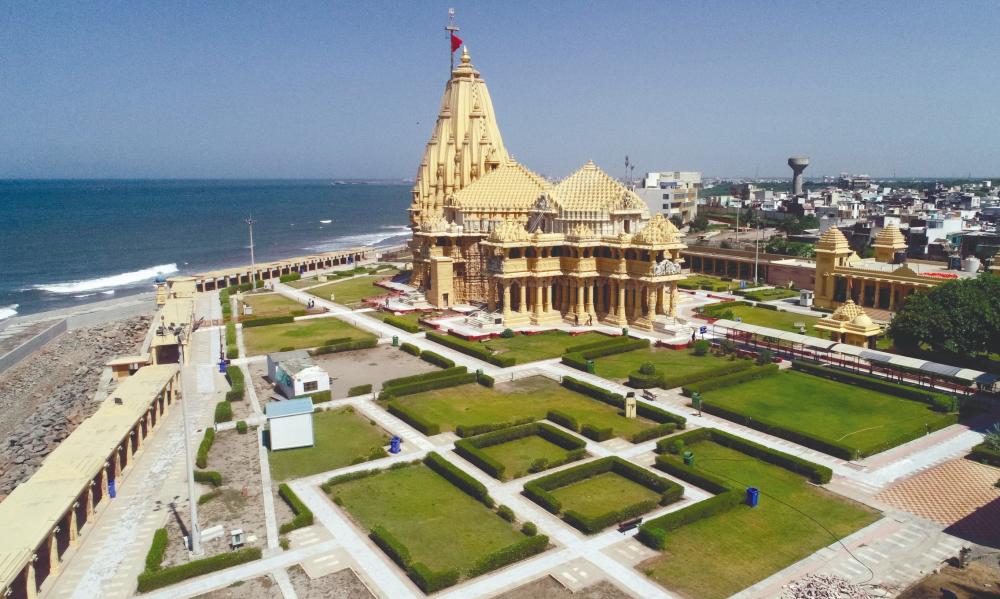
Somnath Temple
An ancient architectural wonder, the temple located in Saurashtra of Gujarat is dedicated to the Lord of the Moon, or Moon God. The intricately carved temple is situated at the confluence of three rivers – Kapila, Hiran and Saraswati.
Dedicated to Lord Shiva, or “Somnath”, one of twelve “Jyotirlingas” shrines (sacred Shiva lingam) in India is kept in the temple.
According to legend, the temple was built by the Moon God with gold in Satya Yuga (Yuga refers to ages in a cycle and is divided into four ages) and subsequently by Ravana with silver in Treta Yuga and later by Lord Krishna with sandalwood in Dwarapa Yuga.
It was rebuilt several times by many kings due to damage caused by invaders and rulers of Mughals, but the final reconstruction ended in 1951.
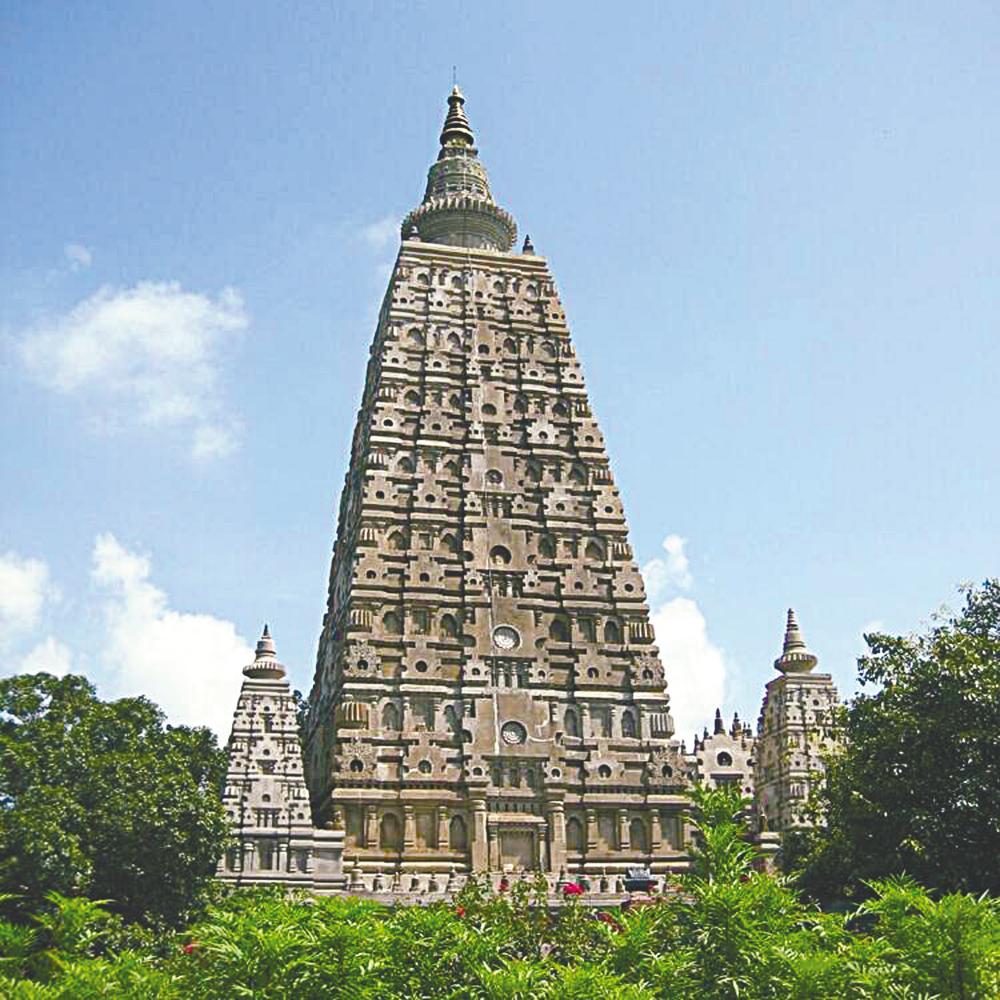
Maha bodhi temple
A Unesco World Heritage site located at Bodh Gaya in the state of Bihar, the temple is a sacred pilgrimage destination. It is a significant place because Buddha meditated and attained enlightenment under a Bodhi tree at this temple.
There is also Muchalinda Sarovar, where Buddha was in deep meditation and remained unmoved despite a thunderstorm, during which Muchalinda the snake king flared its cobra hood to shield Buddha from the rain.
The great Emperor Ashoka decided to build a temple and a monastery in honour of Buddha at the Bodhi tree where Buddha meditated. The Indian style “Shikhara” tower and a smaller tower was built during the Gupta Empire in the 5th or 6th century.
The temple has many carvings of Buddha, depicting his life, and ornamental niches, stupas and lotus, a significant flower representing purity.
Aside from the six, there is also the Ramanathaswamy temple in Rameswaram, a favourite destination for the “Char Dham” pilgrimage and known for one of the longest temple corridors in India; the Golden Temple in Amritsar, overlaid with gold leaves, that is a significant temple for Sikhism; and the Virupaksha Temple in Karnataka, that is best known for its amazing architecture and carvings on the ceiling.



